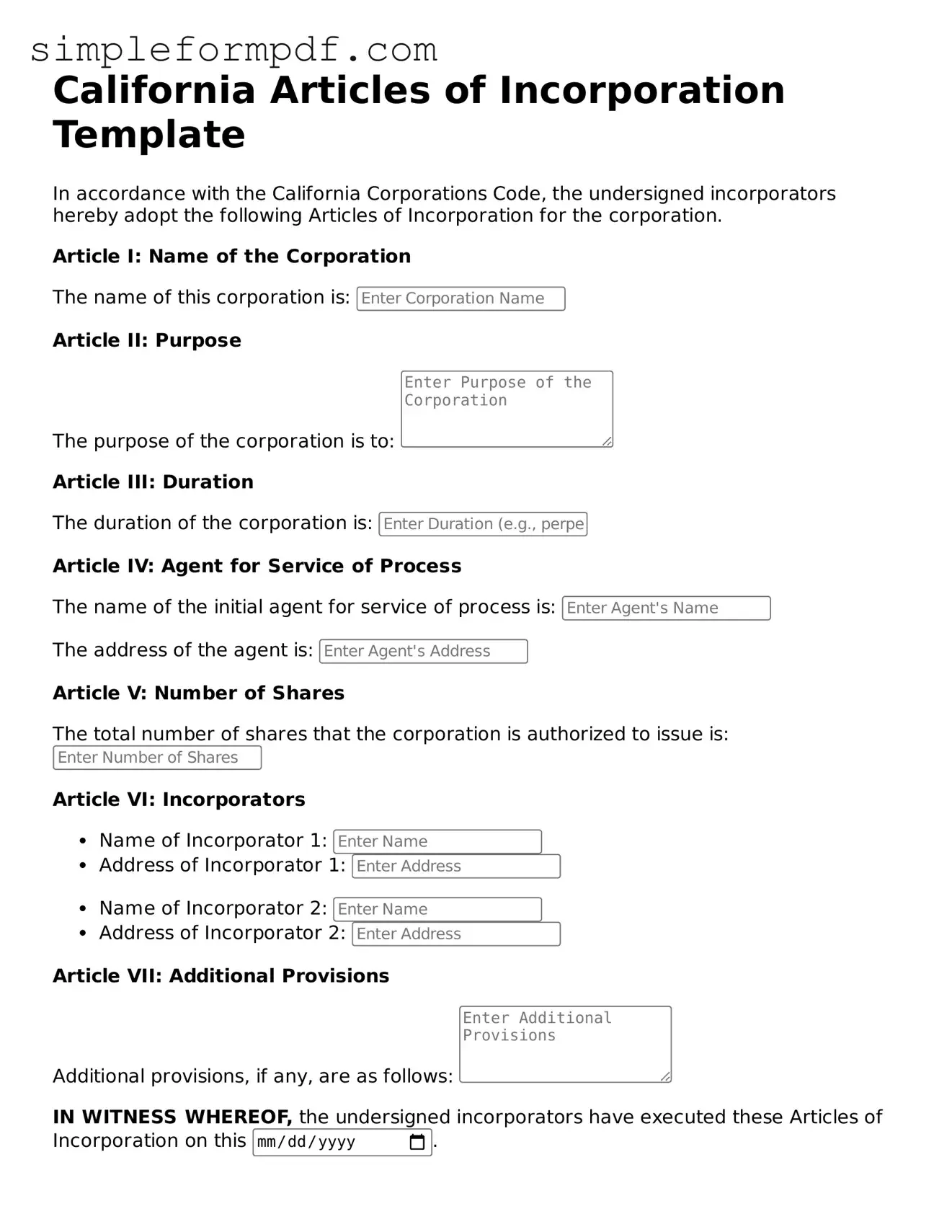Free Articles of Incorporation Form for the State of California
The California Articles of Incorporation form is a crucial legal document that establishes a corporation in the state of California. This form outlines essential details about the corporation, including its name, purpose, and structure, serving as the foundation for its legal existence. Understanding how to accurately complete this form is vital for anyone looking to start a business in California.
Ready to take the first step toward incorporating your business? Fill out the form by clicking the button below.
Launch Editor
